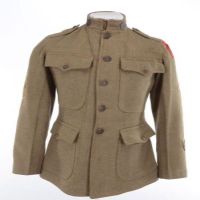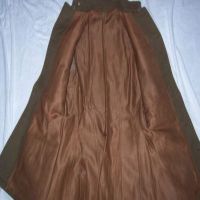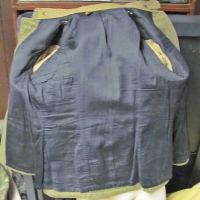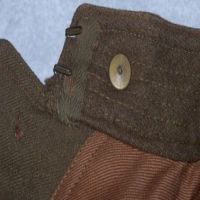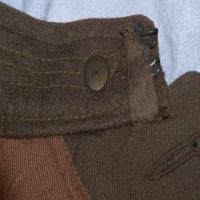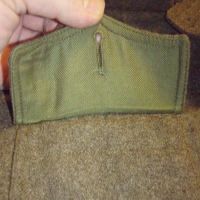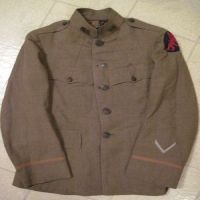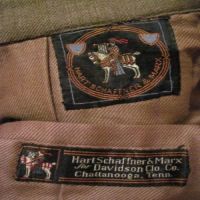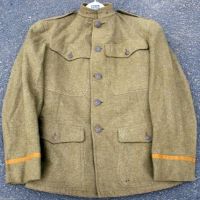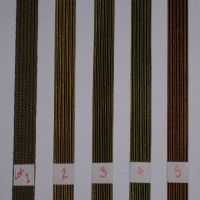Enlisted Service Coat
The Ebony Doughboy went to France wearing the basic clothing that all other doughboys were issued. The wool that was used in the manufacture of uniforms varied in terms of weave, weight, color, quality and finish. Photos of African Americans bear evidence of their use of uniforms made in the U.S. and in Great Britain. Occasionally and especially in the case of officers, some men enlisted the services of tailors to customer make uniforms. The fabric used in officer's uniforms was typically of a higher high quality. Variances in the construction of the interior of custom made tunics, especially linings and options for pockets can also be seen in original garments.
African American Doughboys were typically issued the Model 1917 service coat. The Model 1918 was issued so late in the war that it is highly unlikely that African American received these coats except upon their return to the United States. Characteristics of the Model 1917 coat are a full lining and sleeve lining, four exterior patch pockets with buttoned flaps and usually an interior chest pocket. Until recently, reproductions of this model were unavailable in the market. In the past vendors have opted to reproduce the Model 1918, or rough cut model, which has no lining, lacks finished edges on the interior seams, pockets and pocket flaps and is usually made with heavier, coarser wool. Recently new vendors have emerged that are producing the Model 1917 service coats that accurately replicate original garments. The use of the Model 1918 service coat by members who purchased these in the past is acceptable, however as we accept new members, we will strictly adhere to the use of the model 1917 as our standard issue.
The use of some British tunics by Ebony Doughboys is acceptable in limited scenarios but must be well documented. In the case where British service coats are used, U.S. buttons must be sewn on and American collar disks must be worn.
The M1917 Service Coat
Collar Detail (Throat hooks)
Officers Service Coat
Officers were not issued uniforms while stateside and were required to purchase their own uniforms. Many popular men's clothing manufacturers of the period offered officers uniforms in a broad range of quality and by custom order. Private tailors also offered officer's clothing. Generally speaking, the quality of the fabrics that were used in officer's clothing was of a higher degree of quality than the rough wool that was used to make issued enlisted mens clothing.
Regulations at the time stipulated that "Officers serving in the zone of advance will be issued all articles of the enlisted man's uniform and equipment they need." Many officers opted to use the issued enlisted uniforms as a cost-saving measure and also blend in better with enlisted troops, thus presenting a less desirable target for enemy snipers. Snipers were known look for the officer's cuff braid on the service coat and the looped knot rank insignia on officer's overcoats. Some original accounts describe how officers made a deliberate attempt to dress exactly like privates, with the exception of the rank insignia on their shoulder straps, however there are examples of officers who strictly adhered to regulations and added the officer's cuff braid to enlisted service coats.
Back to UNIFORMS PAGE
